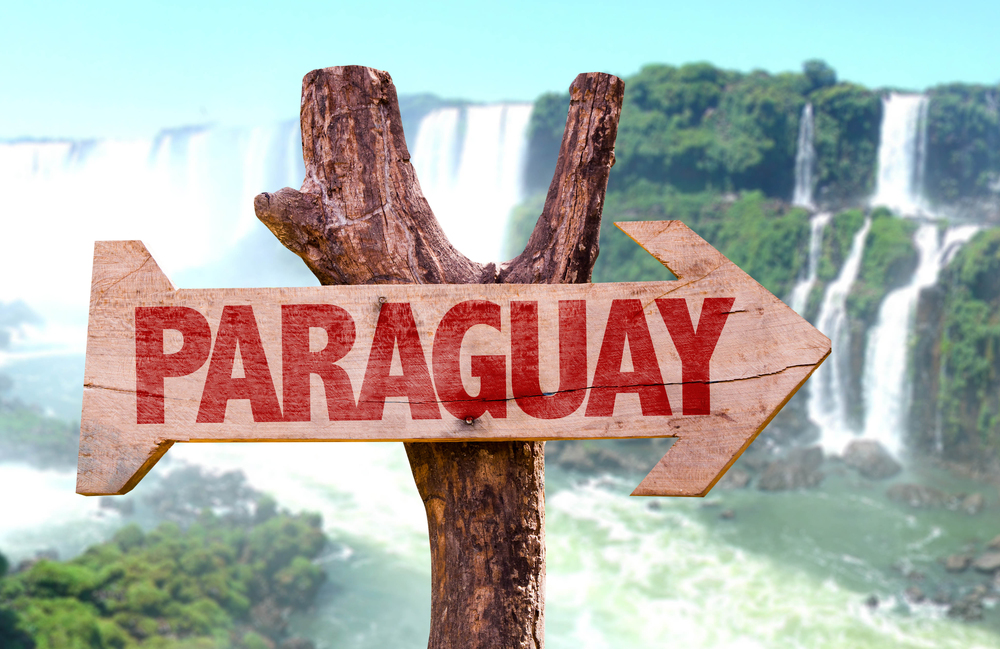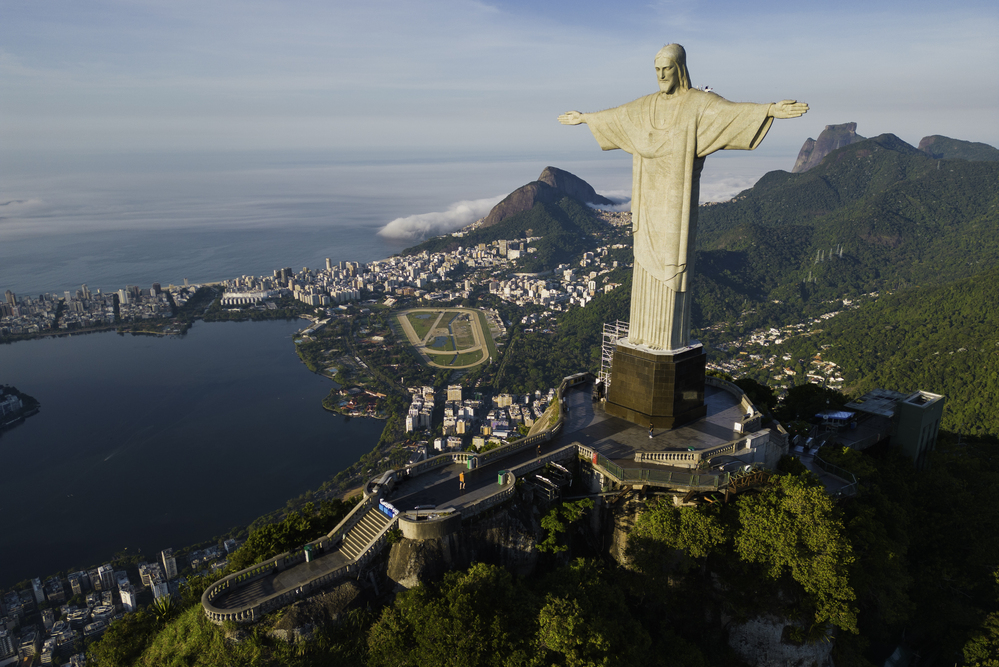Paraguay might not be the first country that comes to mind when talking about tourism in South America, but it has a lot to offer. The country is a blend of indigenous and Spanish influences, with a rich culture, vibrant cities, and natural beauty that surprises visitors.
The Paraguayan people are welcoming, and the local cuisine—such as sopa paraguaya and chipa—wins over any traveler. Paraguay is an affordable, interesting, and still little-explored destination—perfect for those in search of new experiences! In this article, I’ve compiled the best things to do in Paraguay.
Paraguay
Before hitting the road, it’s important to get to know a bit about your next adventure destination. Paraguay might seem modest on the map of South America, but its history is rich, striking, and full of twists and turns.
Understanding this country’s past is essential to grasp its culture, its people, and even the customs that enchant tourists who pass through. In addition to all this grandeur that impresses visitors, it ranks as the fifth safest country in South America.
Territory: A Small Country with a Grand Past
Paraguay is a small country in terms of size, but full of diversity. Located right in the heart of South America, it borders Brazil, Argentina, and Bolivia. Its strategic position makes Paraguay a meeting point for cultures, influences, and very different landscapes — which surprises many travelers. Its small territory does not limit the number of things to do during your stay in the country.
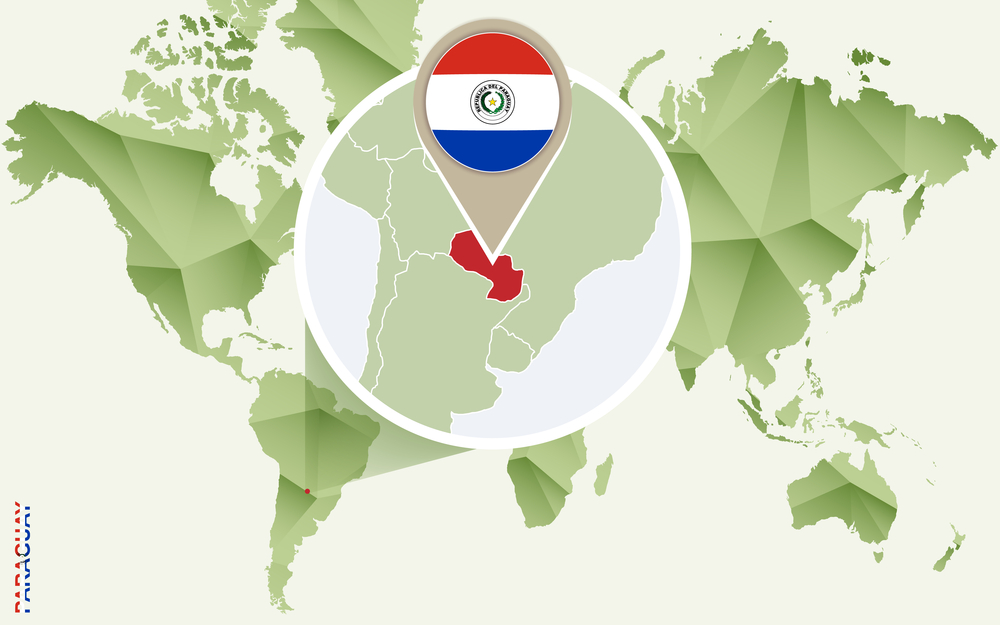
The Paraguayan territory is divided into two large natural regions, separated by the immense Paraguay River. On one side is the Eastern Region, where most of the population lives. This is where the most well-known cities are located, such as Asunción (the capital), Ciudad del Este, and Encarnación. This region is green, with many hills, rivers, plantations, and forests. The climate is more humid, and nature is very present in people’s daily lives.
On the other side of the river lies the Western Region, known as the Paraguayan Chaco. This is a vast, flat territory with few cities and a drier, wilder nature. The Chaco occupies nearly 60% of the country, but is sparsely populated. For those who enjoy adventure, wildlife, and different landscapes, this part of Paraguay can be a true gem.
Although it has no coastline, Paraguay is full of rivers, lakes, and dams, such as the famous Itaipu Dam, one of the largest in the world. And even though it’s smaller compared to its neighbors, Paraguay holds natural, historical, and cultural treasures that enchant those who take the time to explore it slowly.
History and Culture
Paraguay’s history begins long before the arrival of Europeans, with the indigenous Guarani peoples who inhabited the region and left a strong cultural legacy — including in the language, as Guarani is still an official language alongside Spanish. With the arrival of Spanish colonizers in the 16th century, the territory began to transform. In 1537, the city of Asunción was founded, which would go on to become one of the most important centers of Spanish colonization in the region.
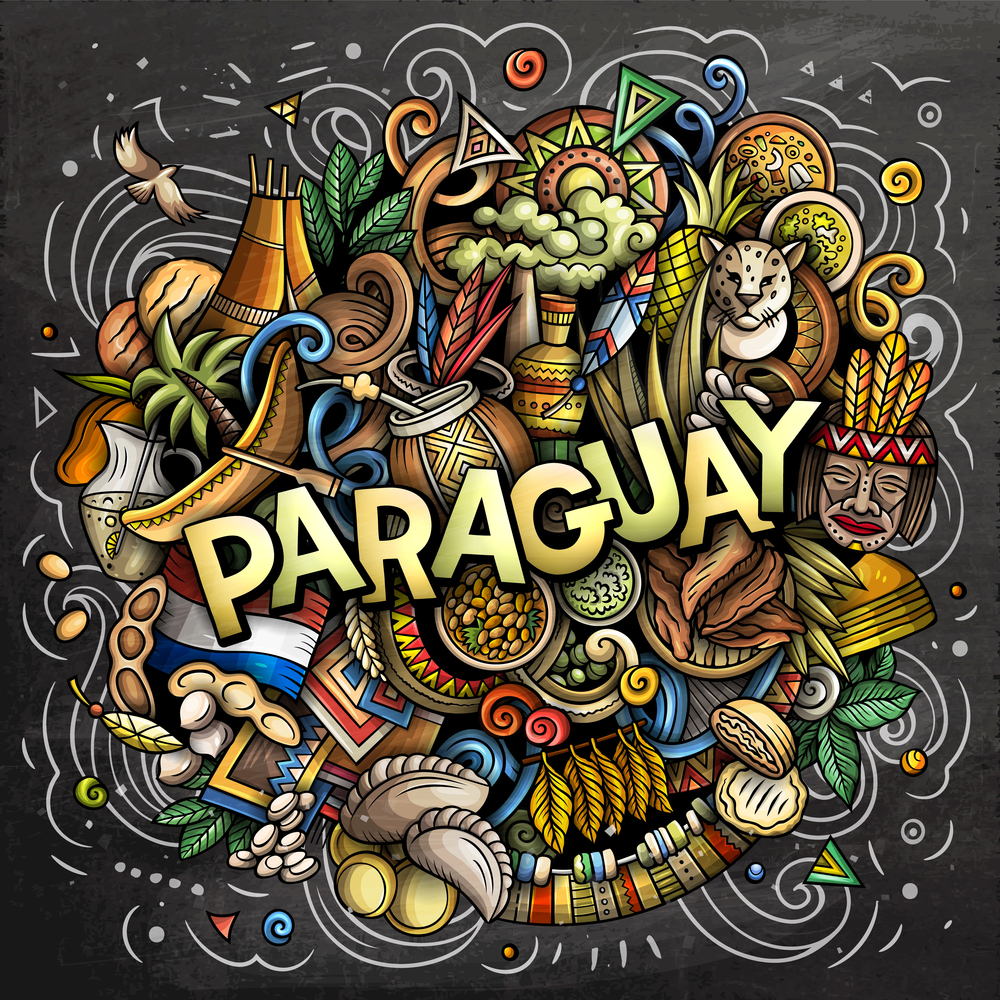
Paraguay was one of the first countries in South America to gain its independence, in 1811. But the following years were turbulent. The country experienced periods of political isolation, bold reforms, and most notably, faced the devastating Paraguayan War (1864–1870), one of the bloodiest conflicts in South American history. Paraguay emerged from this war nearly destroyed, losing a large part of its population and territory.
Even so, the country rose again with courage. Today, Paraguay is a destination that blends tradition, simplicity, and great hospitality. Those who visit the country find a welcoming people, delicious traditional foods, lively festivals, and a vibrant culture — a direct reflection of its intense history.
Top Destinations
Paraguay is a destination that surprises those who take the time to explore it calmly. Far beyond the famous shopping in Ciudad del Este, the country offers an interesting mix of culture, history, nature, and good cuisine. There are activities for all tastes — whether you’re looking for leisure or enjoy exploring different and authentic places. I’ll show you the best things to do in Paraguay.
Start with the capital, Asunción, a peaceful city full of history. Walk through the historic center, visit the Palacio de López, see the Metropolitan Cathedral, and enjoy the sunset by the Paraguay River. The city also has bars, restaurants, and street markets with local products.
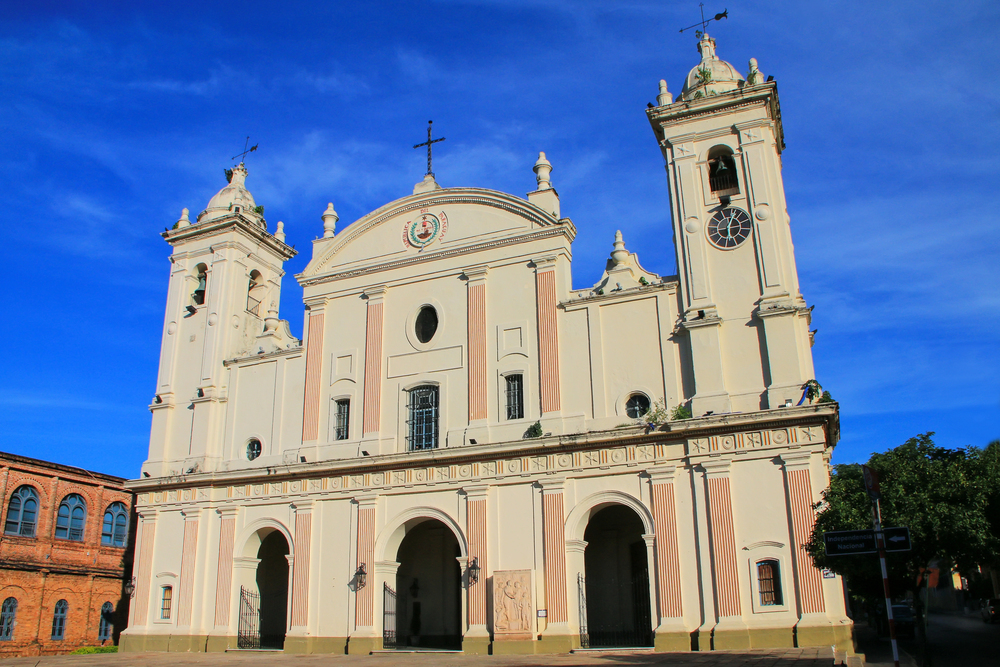
If your focus is shopping, it’s worth visiting Ciudad del Este, one of the most well-known cities in the country. There, you can find everything — electronics, clothes, perfumes, and much more. Take the opportunity to also visit the Itaipu Dam, an impressive structure that offers guided tours, including night tours.
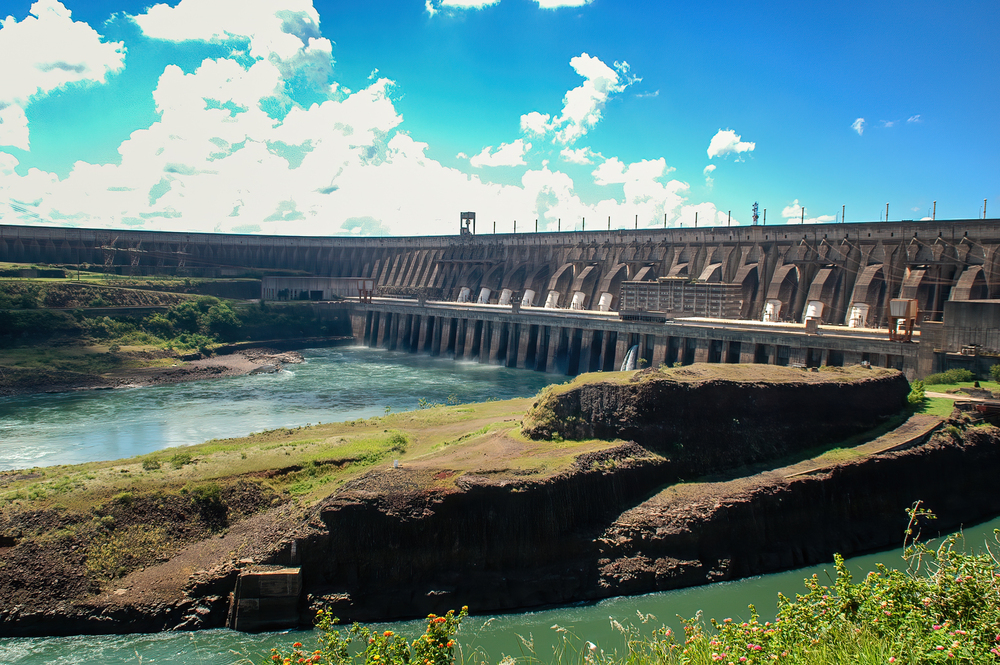
For those who enjoy culture, a visit to the Jesuit missions in Encarnación is a must. The ruins of Trinidad and Jesús are UNESCO World Heritage Sites and reveal a fascinating historical side of the country.
Looking for a bit of beach? Yes, Paraguay has them! The river beaches in Encarnación, on the banks of the Paraná River, are clean, beautiful, and well-organized. Perfect for relaxing on hot days.
And for the more adventurous, exploring the Paraguayan Chaco is a unique experience. This wild region is home to protected areas, wildlife, and a landscape completely different from the rest of the country.
Paraguay may seem simple at first glance, but it offers rich and authentic experiences for those willing to go beyond the basics.
Asunción
Asunción, the capital of Paraguay, is a city that blends history, culture, and a laid-back atmosphere that wins over visitors. It’s the ideal starting point for those who want to get to know the country and better understand the Paraguayan lifestyle. The city may not be very large, but there are plenty of interesting things to do, both during the day and at night.

Start with the historic center, where you can walk leisurely and observe the old buildings that tell the story of the country. One of the most beautiful landmarks is the Palacio de los López, the seat of government, which stands out with its elegant architecture—especially at sunset. Nearby, it’s also worth visiting the Panteón Nacional de los Héroes, an important monument that honors Paraguayan historical figures.
Another great outing is a visit to the Casa de la Independencia Museum, where you can learn more about how Paraguay gained its freedom. It’s a simple house, but full of meaning. For those who enjoy art, the Museum of Sacred Art and the City Cultural Center are good options.
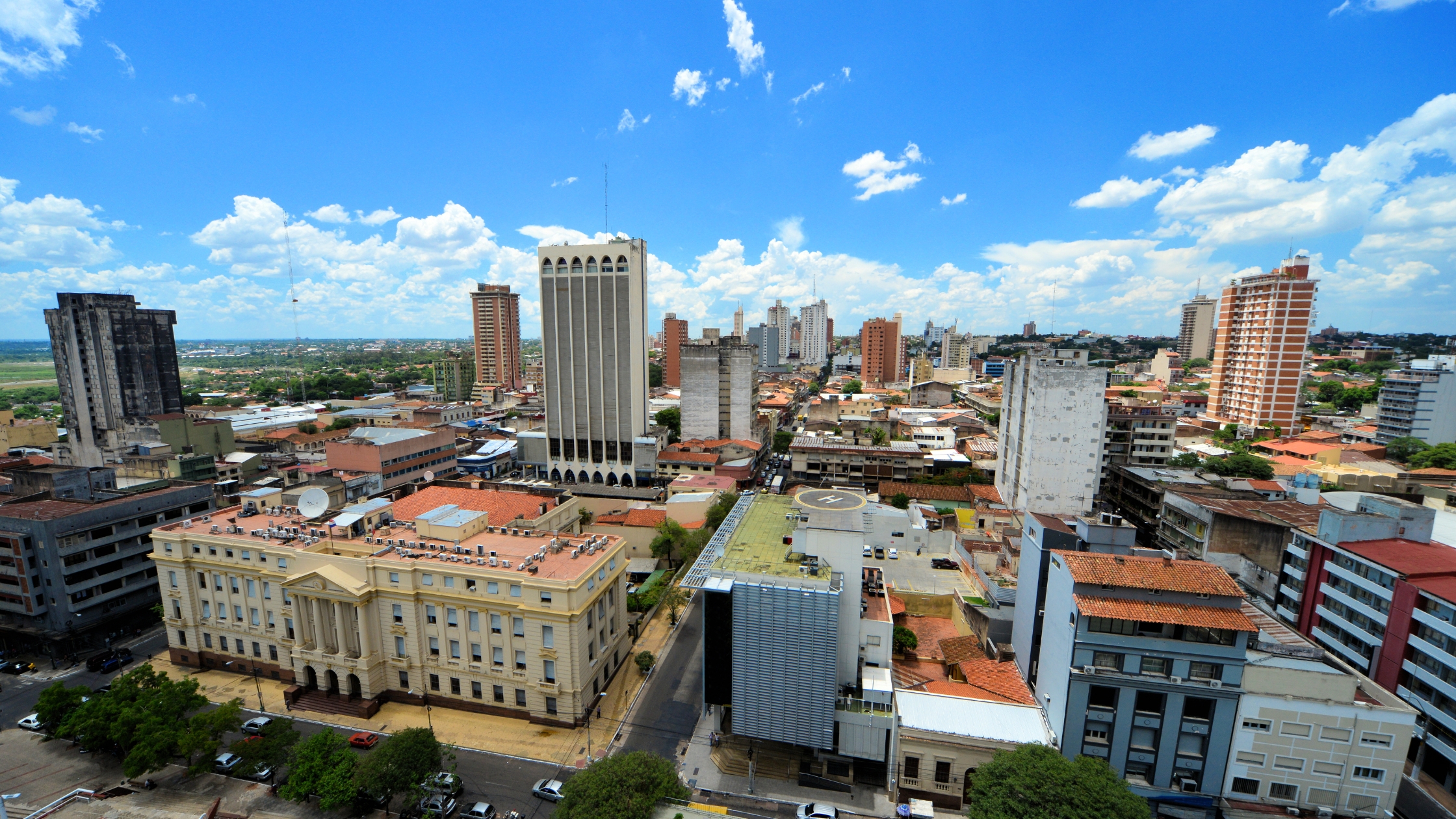
If you want to relax, head to the Costanera of Asunción, a riverside avenue with a beautiful view of the Paraguay River. There, you can walk, ride a bike, or simply sit and watch the sunset. It’s a popular spot for locals and tourists, especially at the end of the day.
Gastronomy is also a strong point. Take the opportunity to try typical foods like chipa, Paraguayan soup (which is actually a type of savory cake), and grilled meats. There are many good restaurants and charming cafes scattered throughout the city.
At night, Asunción has bars, pubs, and live music venues. The Villa Morra neighborhood is great for those who want to enjoy a more lively night out.
Overall, Asunción is a welcoming, safe city with affordable prices. It’s the ideal place for those who want to take a peaceful trip, experience a different culture, and escape traditional tourism.
Ciudad del Este: Shopping, Nature, and Culture in Paraguay
Ciudad del Este is well known to Brazilians for shopping, but the city has much more to offer than just cheap products. Located at the triple border between Paraguay, Brazil, and Argentina, it is a vibrant city full of energy, with nature, cultural attractions, and unique experiences for those who want to explore more.
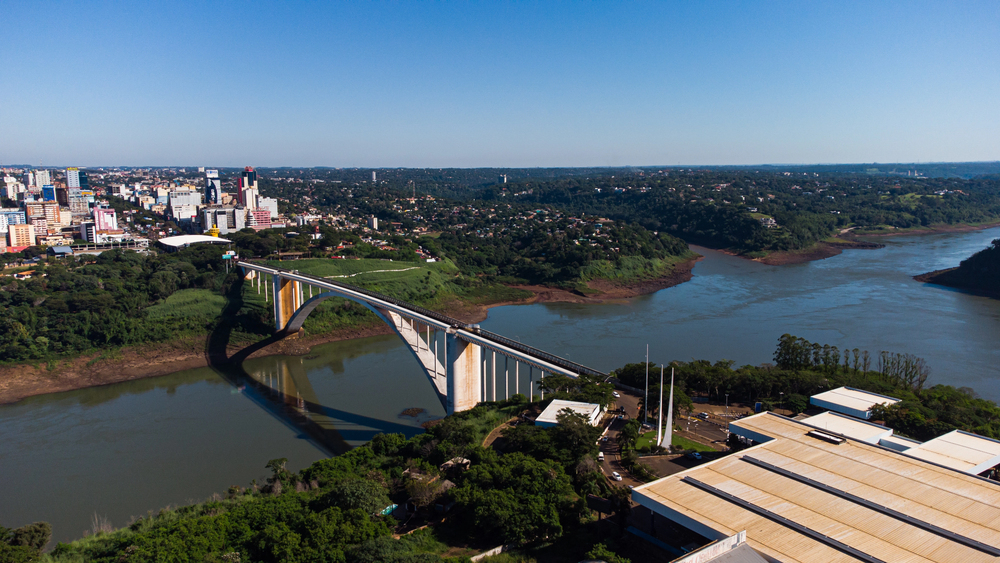
Of course, you can’t talk about Ciudad del Este without mentioning shopping. The commercial center is huge, with malls, galleries, and stores selling electronics, perfumes, clothes, beverages, and much more. The main malls, such as Shopping China, Shopping Paris, and Shopping del Este, are modern and well-organized. However, it’s important to research prices and quality, as there is a lot of variety.
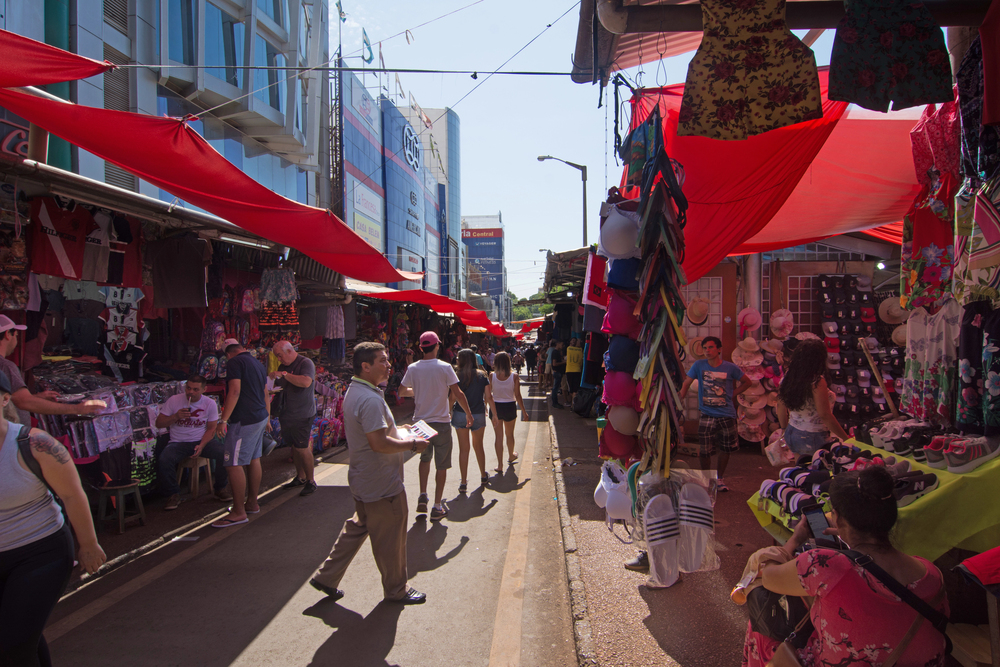
For nature lovers, Lago de la República is a great option. It’s a calm place, perfect for walking, relaxing, or having a picnic. Another highlight is Parque Aventura Monday, which houses the Salto del Monday waterfall. The waterfall is over 40 meters high and offers an impressive view. You can hike, zip-line, or simply enjoy the scenery.
If you’re looking for something more cultural, visit the Catedral de San Blas, which has beautiful modern architecture. And don’t forget to try the local food: chipa, grilled meats, empanadas, and the famous tereré, a typical cold drink made with yerba mate.
Ciudad del Este is a destination that can surprise you. Whether for shopping, outdoor activities, or exploring Paraguayan culture, there’s a lot to do there. The city is bustling but welcoming, and it’s worth visiting at a leisurely pace to go beyond the malls and discover a vibrant Paraguay.
Encarnación: Sun, History, and Culture in Southern Paraguay
Encarnación is one of the most beautiful and organized cities in Paraguay. Located on the banks of the Paraná River, right on the border with Argentina, it combines well-being, history, and leisure in one place. In recent years, the city has modernized and started attracting tourists looking for something different in Paraguay. Whether to enjoy the freshwater beaches, explore historical ruins, or walk along the waterfront, Encarnación is surprising.
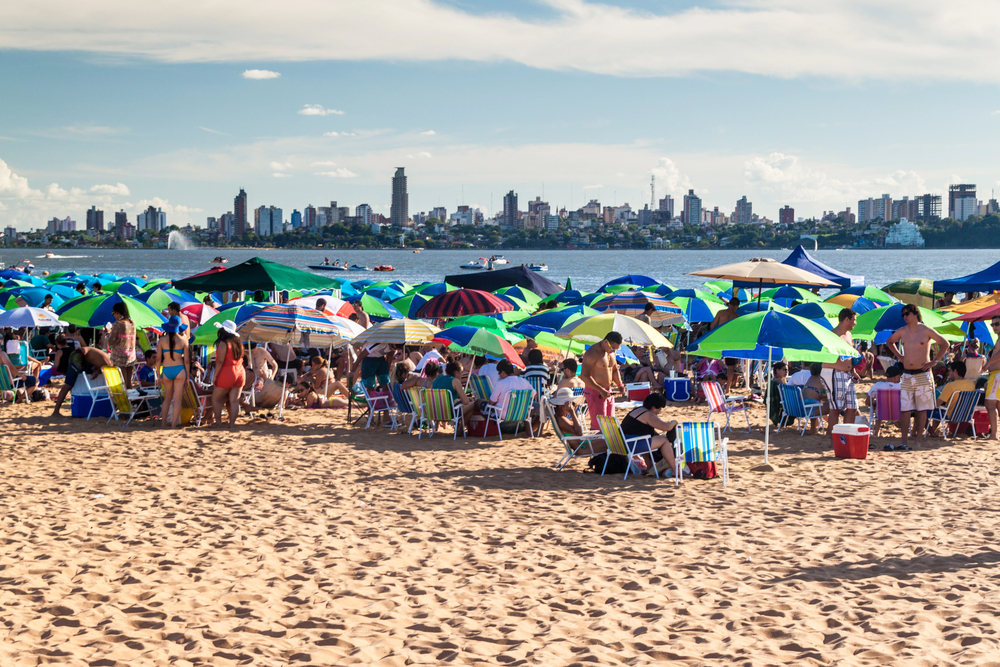
The main highlight of the city is the Costanera of Encarnación, a beautiful and well-maintained promenade that runs along the Paraná River. There, you will find the famous urban beaches, such as San José Beach, with clear sand, calm waters, and excellent infrastructure. It’s a great place to spend the day with family, swim in the river, rent bicycles, or simply relax while watching the sunset.
For those who enjoy history and culture, a must-visit is the Jesuit Missions, a UNESCO World Heritage Site. The ruins of Trinidad and Jesús de Tavarangüe, located about 30 km from the city center, tell the story of the Guarani indigenous people and the Jesuit missionaries who lived there in the 17th and 18th centuries. The tour is moving and full of meaning.
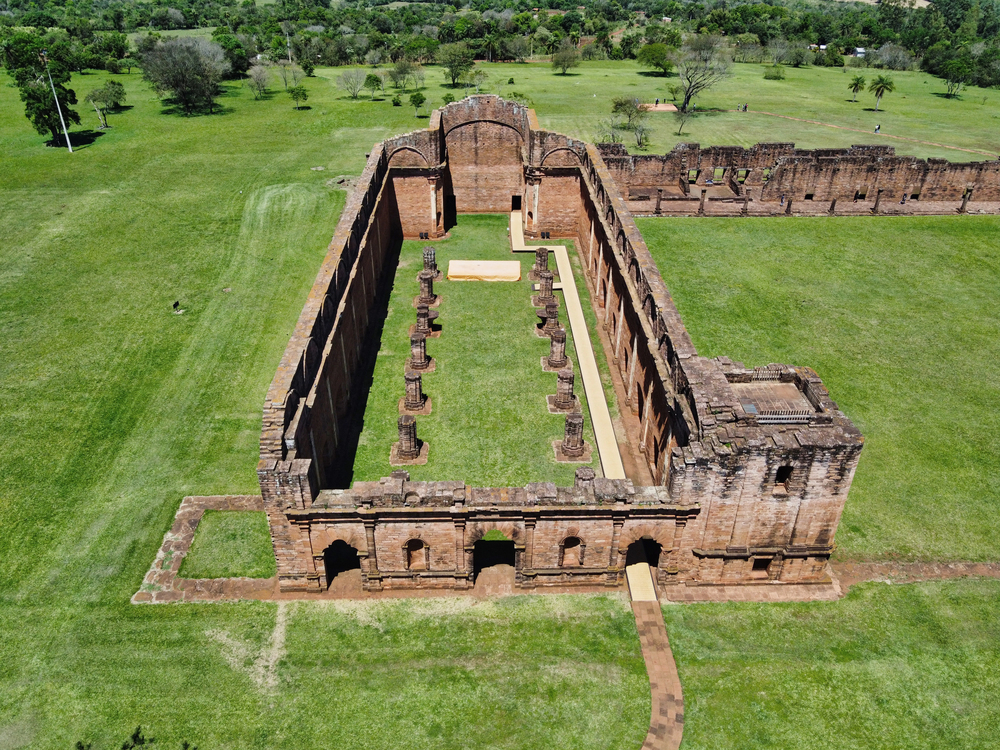
Another attraction of Encarnación is its famous Carnival, considered the best in Paraguay. During the summer, the city is filled with color, music, and joy. The Sambadrome of Encarnación hosts parades with creative costumes and lots of rhythm, attracting visitors from various parts of the country and even from Brazil.
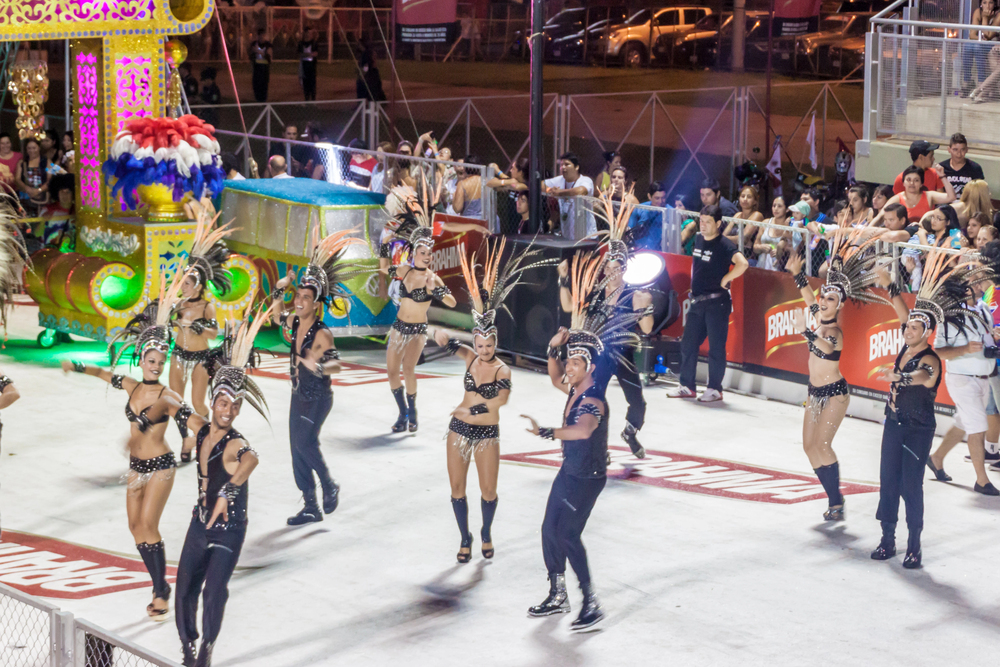
To complete the experience, don’t miss a stroll through the city center, visit the Municipal Museum, see the Cathedral of Our Lady of the Incarnation, and try the local culinary delights such as empanadas, grilled meats, and the traditional tereré.
Encarnación is a peaceful, safe city with a pleasant climate, especially during the warmer months. It’s perfect for those who want to escape traditional tourism, enjoy nature, and learn more about Paraguayan culture in a welcoming and charming environment.
Chaco Paraguayo: Wild Nature and Unique Culture
The Chaco Paraguayo is one of the most mysterious and unexplored regions of Paraguay. Located in the western part of the country, it occupies more than half of Paraguayan territory but is sparsely populated. This vast territory is ideal for those who love adventure, nature, and out-of-the-ordinary experiences. Here, tourism is focused on environmental preservation, wildlife observation, and contact with unique cultures.
One of the main attractions of the Chaco is its natural wealth. The region is home to parks and reserves with a wide variety of fauna and flora. One of the best known is the Defensores del Chaco National Park, the largest in the country. There, you can find jaguars, giant anteaters, deer, rare birds, and many other animals. The park is great for those who enjoy ecotourism, hiking, and bird watching.
Another highlight is the Teniente Enciso Natural Reserve, ideal for seeing wild animals in their natural habitat. Tours are conducted with local guides who know the region well. It’s a different experience, where contact with nature is deep and genuine.
The Chaco is also an interesting place from a cultural point of view. The city of Filadelfia, for example, is the center of the Mennonite communities that arrived in the region in the 1930s. They maintain their own traditions, speak a German dialect, and live in an organized and sustainable way. Visiting the Mennonite museums and getting to know their farms is a way to immerse yourself in a different lifestyle.
In addition, several indigenous peoples live in the Chaco, such as the Ayoreo, Nivaclé, and Guarani. With respect and proper guidance, it is possible to learn more about these rich and ancient cultures.
Because it is a remote region, it is ideal to plan the trip well. Distances are long, the climate is dry and hot, and there is not always internet signal or tourist infrastructure like in other regions. But it is precisely this that makes the Chaco such a special adventure.
For those looking for an authentic, wild, and full of discoveries destination, the Chaco Paraguayo is a perfect choice. A trip to disconnect from the modern world and reconnect with nature and human diversity.
Iguazu Falls in Paraguay: A Little-Known Secret
When we talk about Iguazu Falls, many people think only of Brazil and Argentina. But what few know is that Paraguay is also part of this incredible scenery. Although direct access to the falls from the Paraguayan side is not yet well known or structured for tourism, the country hosts part of the Iguazu National Park, which extends into its territory and protects areas of forest and biodiversity near the falls.
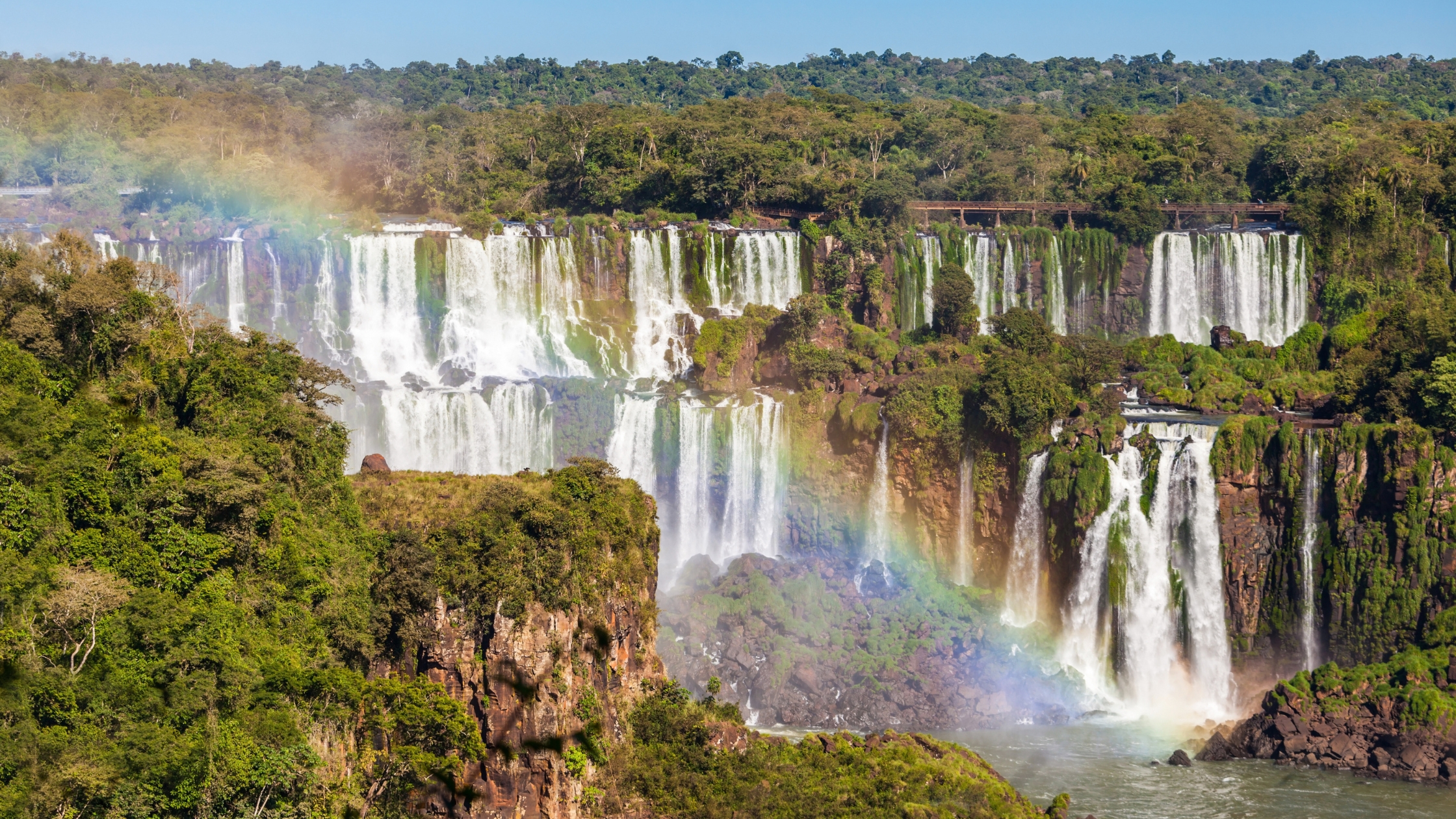
The Paraguayan side of Iguazu Falls is located in the Triple Frontier region, where Brazil, Argentina, and Paraguay meet. The nearest city is Presidente Franco, adjacent to Ciudad del Este. There, you will find the Saltos del Monday National Park, a natural area with beautiful waterfalls that, although not the main falls, offer a similar experience — and with far fewer tourists. The Saltos del Monday are a great option for those who want to connect with nature and enjoy impressive views, while being close to the hustle and bustle of Ciudad del Este.
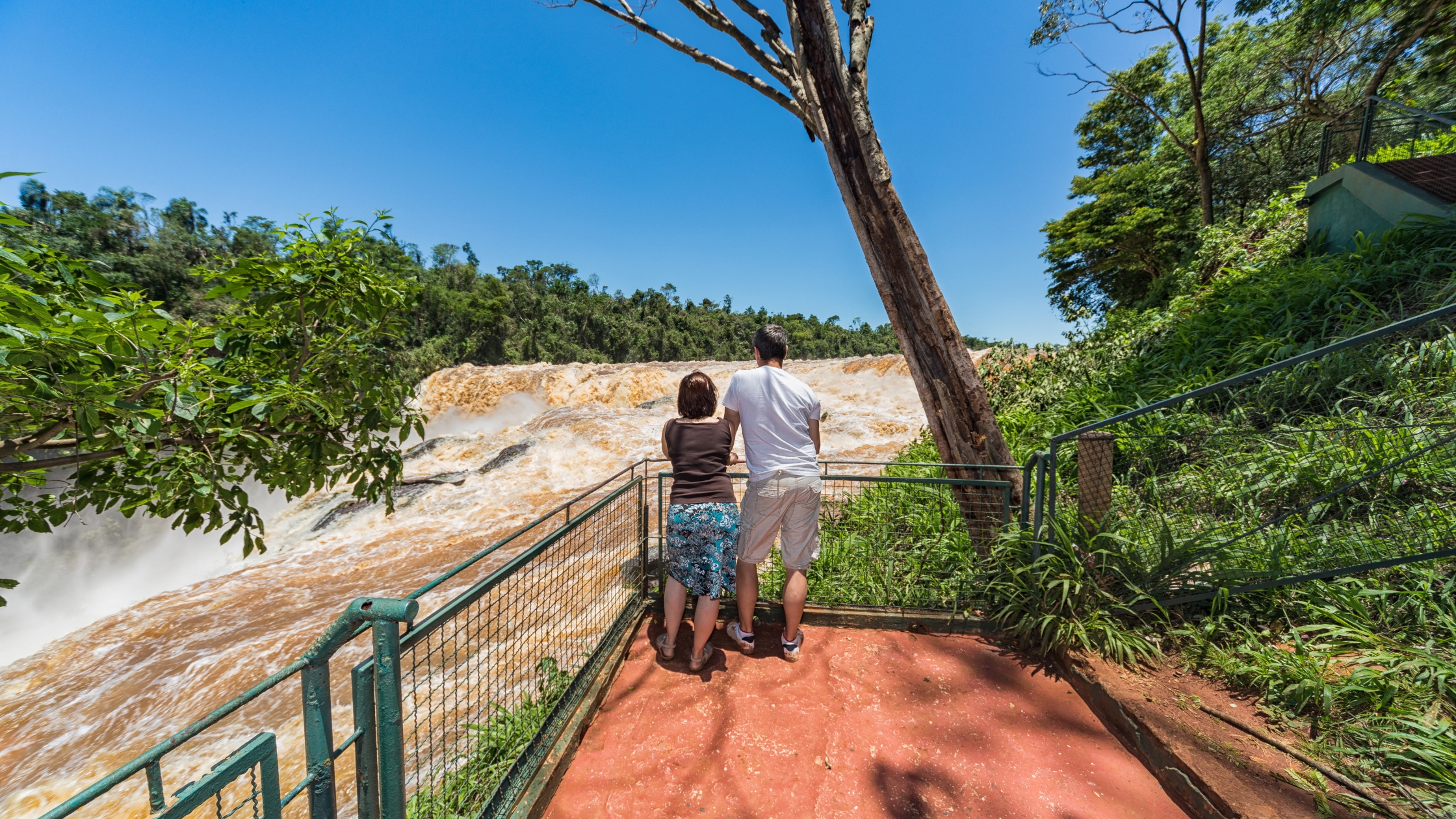
It’s worth noting that the Paraguayan government has plans to better develop tourism in the falls region. There are projects to build viewpoints, walkways, and visitor centers to offer a new perspective on this natural heritage. For now, the experience in Paraguay is more focused on preserved nature and less on mass tourism — which might be exactly what many travelers are looking for.
In addition to the Saltos del Monday, it’s worth visiting the Acaray Hydroelectric Plant and the Itaipu Dam, which is shared with Brazil. These attractions show how the Iguazu River and its surroundings are important not only naturally but also economically and energetically.
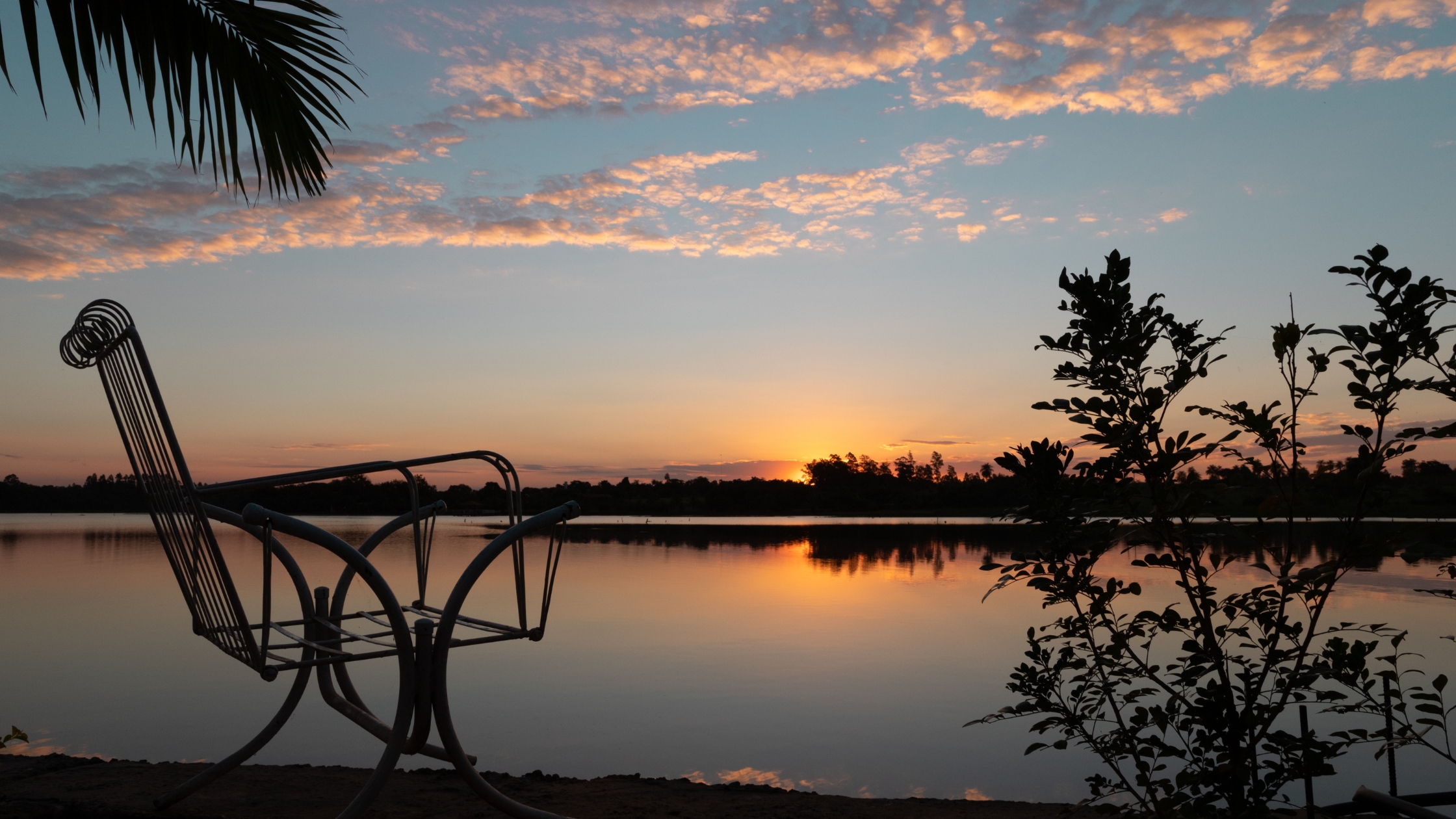
In summary: although the Paraguayan side of Iguazu Falls does not yet have the same tourist prominence as Brazil and Argentina, it holds surprising landscapes, tranquility, and a more direct connection with nature. If you are traveling in the Triple Frontier region, it is definitely worth stopping by and discovering this less explored side of the famous falls.
How to Get to Paraguay
Paraguay is increasingly attracting tourists from various parts of the world. Whether for its unique culture, shopping in Ciudad del Este, or historical and natural landscapes, the country offers a different experience in South America. For foreigners who wish to visit Paraguay, there are several ways to get there, depending on the country of origin and the type of trip planned.
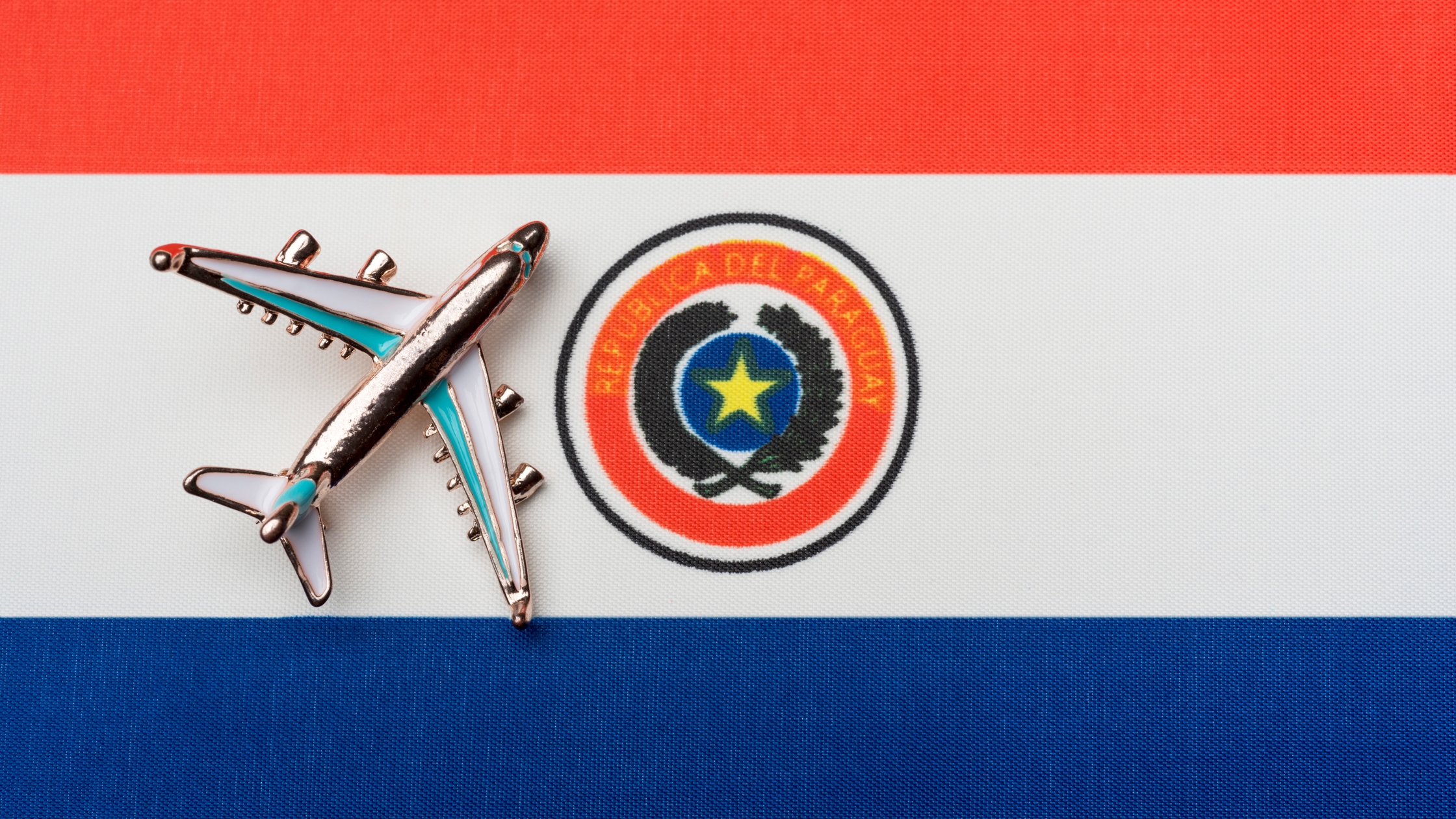
The main air gateway for foreigners is Silvio Pettirossi International Airport, located in the capital, Asunción. The airport receives flights from countries such as Argentina, Brazil, Panama, Chile, and even the United States. Travelers from Europe or other regions can arrive through connections in major South American hubs like São Paulo, Buenos Aires, or Panama City.
Another option widely used by foreigners already traveling in South America is to enter Paraguay by land. The country borders Brazil, Argentina, and Bolivia, and access can be made by bus, car, or tourist vans. The border with Argentina is popular among those visiting the Posadas region and crossing to Encarnación, a charming city with Jesuit ruins and river beaches. Those in Bolivia can enter through the Paraguayan Chaco, ideal for the more adventurous.
The most common way to enter Paraguay from Brazil is by land, mainly through the border between Foz do Iguaçu (Brazil) and Ciudad del Este (Paraguay). The crossing is made via the Friendship Bridge and can be done by car, bus, or even on foot. Many tourists make day trips for shopping, but it is also possible to continue the journey from there to explore other regions of the country. Another land option is to enter through Mato Grosso do Sul, passing through cities like Ponta Porã, which borders Pedro Juan Caballero.
Regarding documentation, most foreign tourists can enter Paraguay without a visa, especially those coming from South America, Europe, and North America, for short tourism stays. A valid passport is required, and in some cases, a vaccination certificate, such as for yellow fever. It is always good to check the updated rules with the embassy or consulate before the trip.
It is important to remember that Brazilians do not need a visa to enter Paraguay, only a valid identity document (RG) in good condition or a valid passport. The use of a driver’s license (CNH) is not accepted as an entry document.
Overall, Paraguay is an easily accessible destination and increasingly prepared to receive visitors from abroad. With a bit of planning, it is possible to arrive smoothly and enjoy the best the country has to offer!
Best Time to Visit Paraguay
Paraguay can be visited year-round, but some times are more pleasant for travel, depending on the type of experience you seek. Located in the central region of South America, the country has a subtropical climate, with very hot summers and mild winters. Knowing the best time to visit the country can make all the difference when choosing things to do in Paraguay.
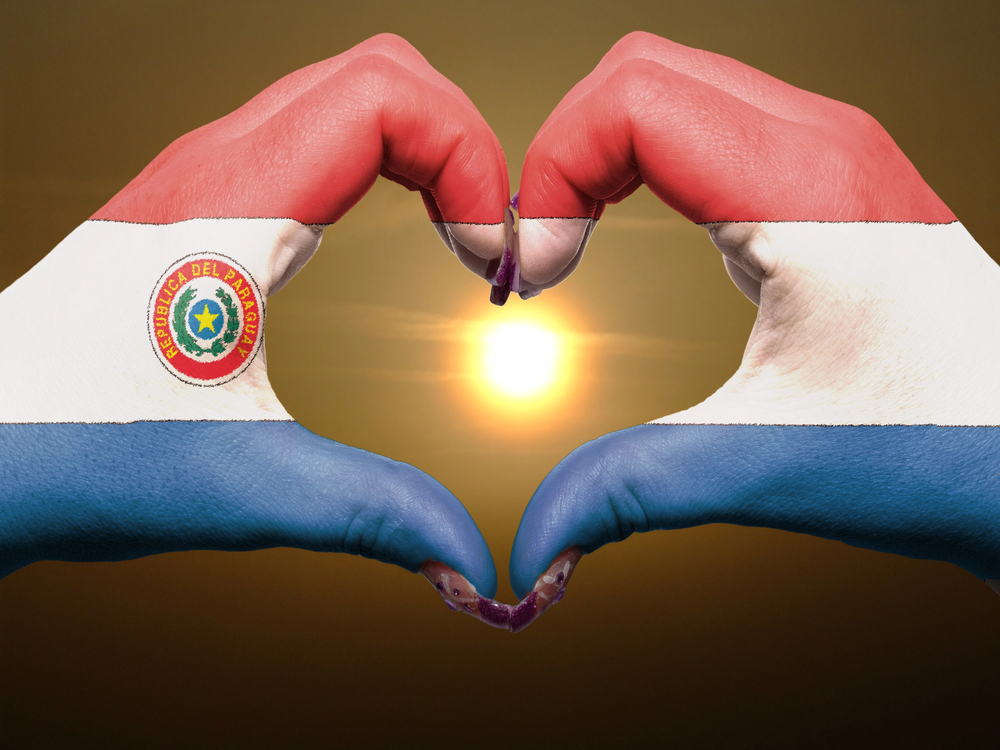
The autumn and winter months, especially between May and August, are considered the best times to visit the country. During this period, temperatures are milder, ranging between 15°C and 25°C, which is ideal for outdoor activities, visits to historical cities, Jesuit ruins, and walks through parks and urban centers. It’s also a good time to explore cities like Asunción, Encarnación, and Ciudad del Este without suffering from intense heat.

On the other hand, the Paraguayan summer, which runs from December to February, tends to be very hot and humid, with temperatures that can exceed 35°C in some regions. However, it is during this time that the river beaches, especially in Encarnación, come to life, with local and foreign tourists enjoying the sun. If you like heat and a lively atmosphere, this can also be a good choice.
Besides the climate, it’s worth considering the festivals and cultural events. For example, in March and April, Holy Week takes place, which is very important in Paraguay, with significant processions and religious traditions. In August, the city of Caacupé fills with pilgrims and tourists during the feast of the country’s patron saint. And in December, there are many Christmas fairs and typical celebrations.
Another important factor is the movement at the borders and in the stores. If your goal is to shop in Ciudad del Este, for example, avoid the periods close to Christmas when the commerce is crowded. And don’t forget to check the allowed purchase value to transport from Paraguay to your destination country.
In summary: if you want pleasant weather and peaceful outings, prefer the months between May and August. If you seek excitement, heat, and river beaches, summer can also be a good option. Paraguay has its charm in all seasons — just choose what best suits your travel style!
